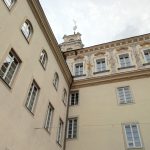Views: 321
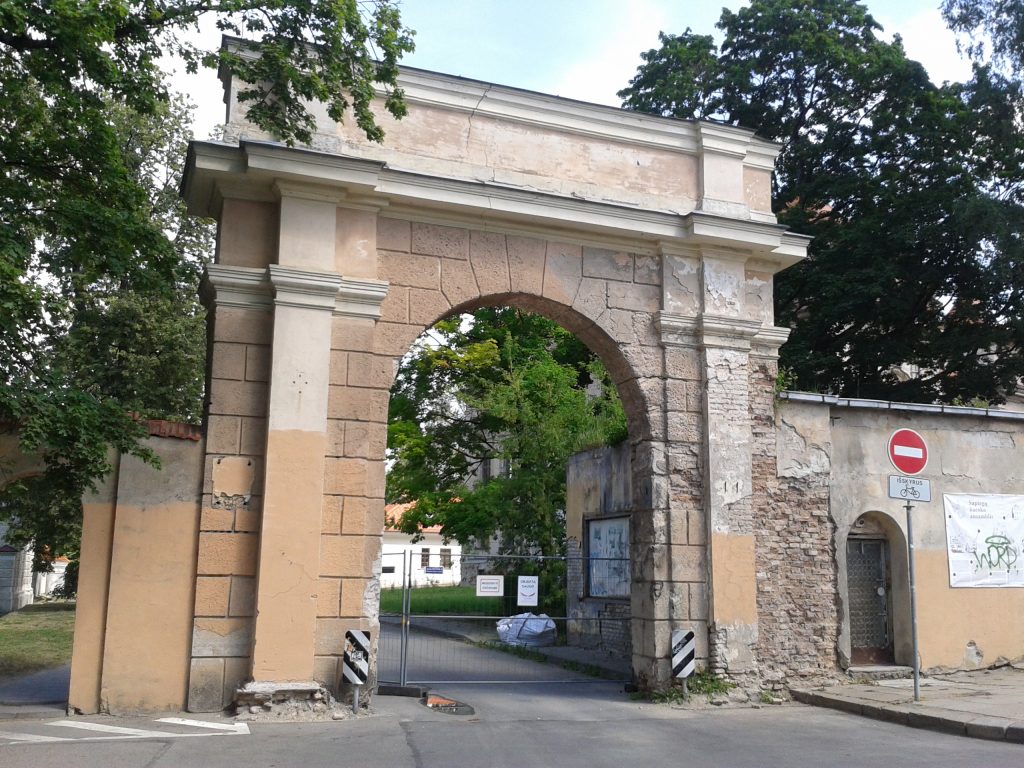
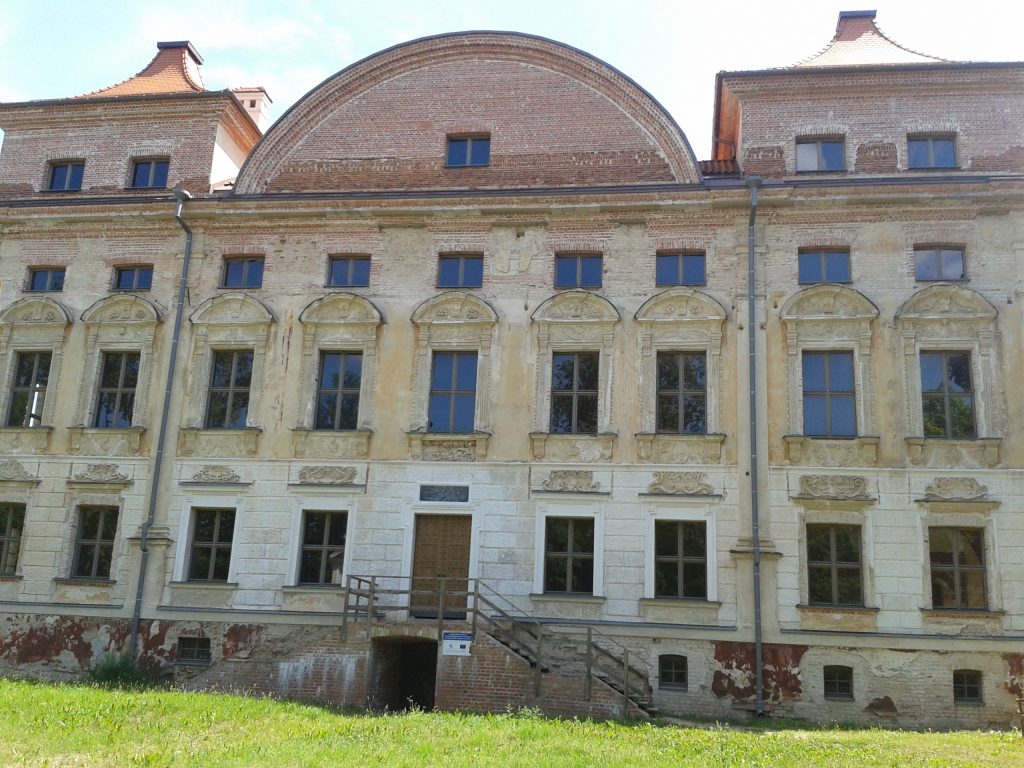
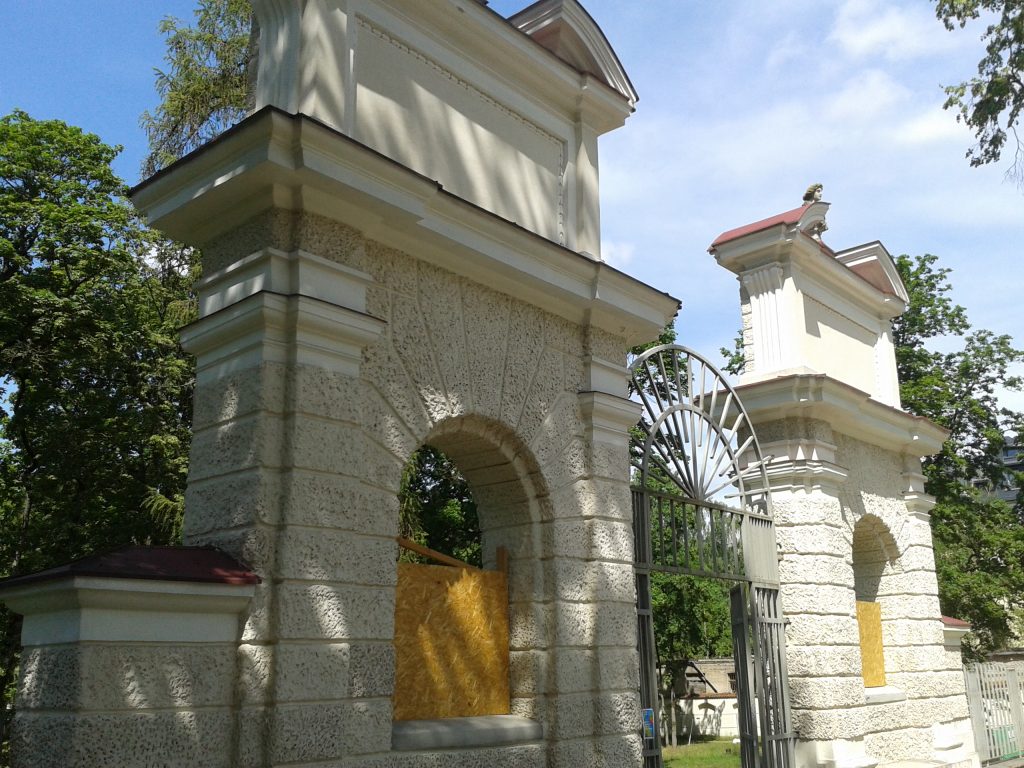
All photos are copyrighted by Vladislav B. Sotirovic
© Vladislav B. Sotirovic 2019

RELATED POSTS
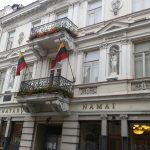
A museum operates today in the House of Signatories, along with a memorial hall where the act of Lithuania's independence was signed on February 16th, 1918 when Lithuania was under the German occupation and administration during WWI (1915-1918)The first floor of the house with statues symbolizing agriculture and fishing is very decorative. Niches on the second floor hold two male bustsHaving acquired this house in the late 19th century, Karol Sztral reconstructed it according to architect Aleksei Polozov's project in the style of HistoricismAll photos are copyrighted by Vladislav B. Sotirovic© Vladislav B. Sotirovic 2019
Continue Reading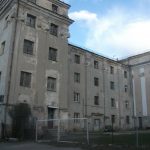
The building was noted for its stately late Baroque appearance. Michelangelo Palloni and Pietro Perti are thought to be the authors of the decorationsNoteworthy is an interesting Baroque pediment with a stucco bas-reliefA courtyard of the estate. Today, the buildings belongs to the Lithuanian Academy of Music and TheatreAll photos are copyrighted by Vladislav B. Sotirovic© Vladislav B. Sotirovic 2020
Continue Reading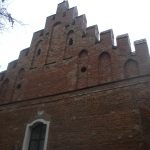
The church was named after St. Nicholas, who was the Bishop of Myra and the patron of travelers and merchants. The character of Santa Claus is thought to be based on this saintThe Church of St. Nicholas in Vilnius is the oldest surviving Late Gothic church in Lithuania. The small church was used by the Franciscan monks, who lived nearbyThe interior of the church is decorated with ornate rib and groin vaults. A 16th-century picture of St. Nicholas with a silver frame is located on the left altarAll photos are copyrighted by Vladislav B. Sotirovic© Vladislav B. Sotirovic 2018
Continue Reading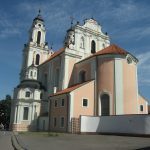
It was built by the Benedictine Sisters near their convent. It acquired its present-day appearance after a great fire in Vilnius in 1737. The church has a rich interior decorated with stucco mouldings and artificial marble. Today the church is restored and adapted for concerts. It also hosts the International Christopher Summer Music FestivalFlanking the church on Vilniaus Street, a particularly elegant Chapel of Providence was erected in 1641 and rebuilt in 1746The single-nave church has 9 magnificent Late Baroque altars and a pulpitAll photos are copyrighted by Vladislav B. Sotirovic© Vladislav B. Sotirovic 2018
Continue Reading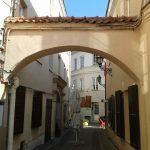
A building of Jewish Center of Culture and Information in the area of the Large Jewish Ghetto in 1941-1943. In this house a famous Vilnius resident Dr. Tzemach Shabad livedTzemach Shabad (1864-1935) was not only a good doctor, but a societal and community figure, and humanist as well. A monument (in 2007 erected) to him on the territory of WWII Large Jewish GhettoA plaque of a plan of the Jewish Ghetto in 1941-1943. There were Small and Large Jewish Ghettos existing from September 6th, 1941 to September 23rd, 1943. Today, September 23rd is the National Memorial Day for the Holocaust/Genocide of the Lithuanian Jews All photos are copyrighted by Vladislav B. Sotirovic© Vladislav B. Sotirovic 2019
Continue Reading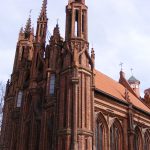
Church of St. Anne (left) and Bernardine Church (right). The church of St. Anne is a unique monument of red firebrick Gothic architecture in LithuaniaSt. Anne Church, designed in 1495-1500 by Benedikt Rejt, built up at the turn of the 15th century, and renovated in 1902-1909. 35 different kinds of brick were used help in creating the church. The façade was reinforced in 1960-1970St. Anne Church - a church which French Emperor Napoleon Bonaparte wanted to put on his palm and carry it over to Paris. The Church of St. Anne is symmetrical, marked by graceful, pointed forms that continue upwardAll photos are copyrighted by Vladislav B. Sotirovic© Vladislav B. Sotirovic 2018
Continue Reading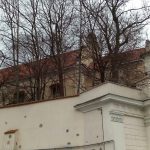
The church was originally Gothic but in 1750-1755 it was restored according to design by Franz Ignatius Hoffer and acquired some late Baroque and Rococo featuresNearby the church building stand the 17th-18th-century buildings of the Carmelite Monastery which had a rich archive and library. A study centre opereted there. In 1797-1944 it housed the Ecclesiastical Seminary Today the buildings are used by the Centre for Book Research and Libraries, and the church is closed to the publicAll photos are copyrighted by Vladislav B. Sotirovic© Vladislav B. Sotirovic 2020
Continue Reading
The chapel was built in 1624-1636 to hold the remains of St. Casimir who was canonized in 1604. The chapel is part of the Cathedral Basilica in Vilnius The construction of the Early Roman Baroque-style chapel was funded by rulers Sigismund and Vladislaus Vasa. It was a place where the Grand Dukes of Lithuania prayed and could be reached by a corridor joined to the Lower CastleThe chapel is the work of Italian masters and one of the most beautiful Baroque mausoleums in Lithuania All photos are copyrighted by Vladislav B. Sotirovic© Vladislav B. Sotirovic 2019
Continue Reading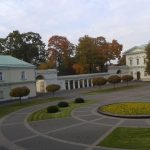
The palace has always been representional: rulers, kings, emperors and kings-to-be like Napoleon, Stanislaus August Poniatowski, Alexander I, Louis XVIII and others used to stay there on their visits to VilniusThe Soviets turned the palace into an officer's club later to be converted into Artist HouseIn 1939, when Vilnius had been part of Lithuania, plans to settle the Presidency in the palace were advanced. However, it was not until 1997 that these plans were carried outAll photos are copyrighted by Vladislav B. Sotirovic© Vladislav B. Sotirovic 2020
Continue Reading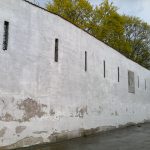
It was not until 1503 when Grand Duke of Lithuania and King of Poland Alexander Jagiellon granted a privilege that the construction of the wall began. The year 1522 is considered to mark the end of the construction, when Grand Duke of Lithuania Sigismund the Old exempted the residents of Vilnius from the duty of keeping guard at the castle and ordered 24 guards to be posted at the city gatesThe length of the defensive wall was 2,5 kilometres having 10 gates. The wall surrounded the territory of today's Old Town, approximatelly 100 hectars. The foundation of the defensive wall was built of stone, and bricks were mainly used at the level of loopholes and higher. The was was adapted for defence with gunpoweder-operated firearms Until the late-18th century, the Vilnius defensive wall was frequently renovated. The wall served for the last time in 1794 during the uprising led by ...
Continue Reading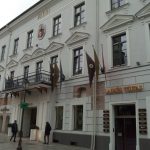
Polish King Jan Sobieski, Russian Emperor Alexander I and French Emperor Napoleon I visited the mansion on various occasions. The building was reconstructed in 1839-1841. The present façade is ClassicalA Florentine artist Michelangelo Palloni, was invited from Italy in 1674 to work at Pažaislis monastery and church near Kaunas, and Mykolas Kazimieras Pacas then commissioned him to paint frescoes for of this estate.Unfortunately, none of the original interior, which also included rich stucco work, remainsAll photos are copyrighted by Vladislav B. Sotirovic© Vladislav B. Sotirovic 2022
Continue Reading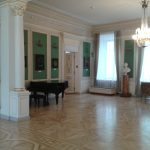
The family of the noblemen Chodkiewicz bought a house that stood on this site, and transformed it into a Renaissance residenceGrand Hall of the Vilnius Picture Gallery in former Chodkiewicz PalaceThe Classicist interior of the palace is a notable feature of the building of former Chodkiewicz Palace, today the Vilnius Picture GalleryAll photos are copyrighted by Vladislav B. Sotirovic© Vladislav B. Sotirovic 2020
Continue Reading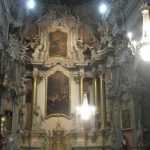
The interior od the church is in the Rococo style with the exception of the Pac Chapel, which is late Baroque in the exterior, and rather Classical in the interior Impressive, gently-curved church pulpit in the Rococo style is created from wood and gold-plated tin in the second half of the 18th centuryThe church's mural painting is the only one of its size remaining in Lithuania. One arch depicts 19 scenes from St. Theresa's lifeAll photos are copyrighted by Vladislav B. Sotirovic© Vladislav B. Sotirovic 2020
Continue Reading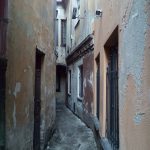
The entrance to the Knight Street in Vilnius Old TownA courtyard after the end of the Knight StreetThe end of the Knight Street (followed by the courtyard)All photos are copyrighted by Vladislav B. Sotirovic© Vladislav B. Sotirovic 2021
Continue Reading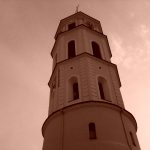
Its foundations are superimposed on the remains of a square tower, one of the oldest brick buildings in Lithuania, whose bricks are bound in the pre-Cothis (Baltic) manner An oval four-story tower with loopholes was built on these remains. Originally, it was a defensive tower of the Lower CastleThe underground square part dates from the 13th century, and the round part - from the late 14th century All photos are copyrighted by Vladislav B. Sotirovic© Vladislav B. Sotirovic 2019
Continue Reading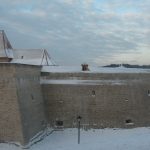
The Bastion is comprised of a tower, cannon room and 48 m. the long corridor connecting it with the towerThe walls and moats of the Bastion were excavated in 1965-1970, and the canon room was renovated in 1985-1986 The entire Bastion is converted into a museum, and since 1987 it houses an exhibition of defensive fortifications and weaponryAll photos are copyrighted by Vladislav B. Sotirovic© Vladislav B. Sotirovic 2019
Continue Reading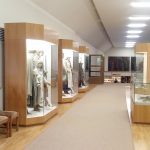
The museum is located in the north wing of the Old Arsenal and looks at Neolithic, Bronze and Iron Age Lithuania followed by the various tribes that inhabited the area until they combined to form a state in the 13th centuryThe museum displays object found in burial sites, such as pins, amulets, rings, brooches, knives or necklaces. You can as well as see regional dressses of Lithuanian tribes before the formation of the state in the mid-13th century The museum shows a hoard of some 16.000 17th-century coins found in 1999 in Vilnius. It is believed that the hoard may have been hidden during the 1700-1721 Great Northen War. Nevertheless, it is the largest collection of old coins to be found in Lithuania All photos are copyrighted by Vladislav B. Sotirovic© Vladislav B. Sotirovic 2020
Continue Reading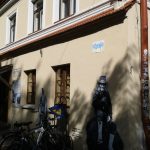
The Galera Gallery in the Užupis Art Incubator also operates there, where exhibitions of various kinds of art are organizedGalera of Užupis is an Alternative art gallery. That is a place similar to the former Christiana district in Copenhagen in DenmarkThe Užupis district and its Art Incubator are separated from the Old Town in Vilnius on three sides by the River Vilnia, and by a high hill on the fourth sideAll photos are copyrighted by Vladislav B. Sotirovic© Vladislav B. Sotirovic 2020
Continue Reading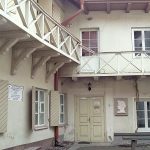
In this house, belonging at the time to a university professor, Adam Mickiewicz stayed for a short period in 1822 and completed the poem "Gražina"It is small museum of three rooms but it is currently being expended. Among the exhibits are several portraits of Adam Mickiewicz and some period furniture, including a table and chair from Kaunas and a chair from Paris that the poet himself usedThe exhibition includes among the many volumes of his work in foreign languages, for instance, a Persian translation of his "Sonnets from the Crimea" All photos are copyrighted by Vladislav B. Sotirovic© Vladislav B. Sotirovic 2020
Continue ReadingThe House of Signatories (Karol Sztral’s House)
Słuszki Estate in Vilnius
Church of St. Nicholas
Church of St. Catherine and Former Benedictine Monastery
Jewish Quarter (I)
Church of St. Anne
The Church of St. George the Martyr
Chapel of St. Casimir (exterior)
The Inner Courtyard of the Presidential Palace in Vilnius
The Defensive Wall of Vilnius
The Pac Mansion
The Vilnius Picture Gallery (Chodkiewicz Palace)
Church of St. Theresa (Interior)
The Knight Street in Vilnius
The Belfry of the Cathedral Basilica in Vilnius
The Bastion of the Vilnius Defensive Wall (I)
The Museum of Archaeology of Lithuania
Photo Slider Old Town in Vilnius: Vilnius University and Monastery Quarter
Užupis Art Incubator (2)
The Adam Mickiewicz Museum



